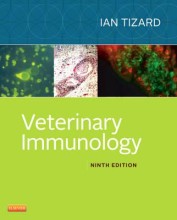Immune defence of mammals against bacterial pathogens
26 important questions on Immune defence of mammals against bacterial pathogens
What is innate immunity?
What is adaptive immunity?
The innate and adaptive immune responses differ in a number of ways?
- The innate system is constitutively present, while the adaptive system response takes some time to develop
- The innate system is not specific
- The adaptive system exhibits immunological memory
- Higher grades + faster learning
- Never study anything twice
- 100% sure, 100% understanding
Differences in susceptibility of animals to pathogens could be due to
- Absence of specific tissue or cellular receptor for attachment to the pathogen
- Temperature of the host and ability of the pathogen to grow
- Lack of exact nutritional requirements to support pathogen growth
- Lack of a target site for a microbial toxin
- Individual resistance
- Age, sex, diet, stress, trauma, drugs
What is the mucus layer?
- A thick layer of mucin glycoprotein secreted by specialized globet cells in the epithelium.
- It is constantly made and removed by peristaltic flushing
- Two structural layers: The outer layer contains bacteria and the inner layer without bacteria
What is the intestinal epithelium?
- A layer of intra epithelial cells (IECs) that seperates the lumen from the lamina propria (LP)and the inside of the body
The cells of the intestinal epithelium are renewed by?
What are tight junctions?
What do pattern recognition receptors (PRRs) do?
Where are PRRs expressed?
What are NOD1 and NOD2
Which mechanisms help avoid excessive immune responses?
- In the absence of inflammation, TLRs are only highly expressed in the crypts
- Activation of the TLR pathways leads to different responses depending on the location of the stimulus. Basolateral stimuli activate, while apical prevents
- Negative feedback regulation of the NF-kB pathway
- Reduction of NF-kB activation by commensal bacteria
- Non-virulent bacteria can inhibit the NF-kB pathway by blocking degradation and thus promoting attenuation of inflammatory responses
What do paneth cells secrete?
What is a major group of the AMPs?
- small, highly basic peptides that show antimicrobial activity against gram negative and positive bacteria
Where does the antibacterial acitivity come from defensins?
- the defensin displaces the lipid, weakening the membrane and forming deadly pores -> the carpet wormhole mechanism
What do defensins also serve as?
What is the antimicrobial factor Reg3B protein?
- Their effect is growth phase-dependent
- in case of gram-negative bacteria: It involves binding to the lipid Anchor of lipopolysaccharide (LPS)
What are the cathelicidins (AMPS)?
- cationic peptides that kill bacteria by binding to the bacterial membrane via electrostatic interactions, creating pores.
What is immunoglobin A?
- Protects against microbes in the intestine by maintaining the integrity of the epithelial barrier and shaping the composition of commensal bacteria.
- Produced by plasmacells in the lamina propria
The IgA complex passed through the cell and gets secreted on the luminal side epithelial cell.....
What does the secretory component do?
How does sIgA act?
- Sterically hindering attachment to epithelial cells
- immune exlusion
What is immune exclusion?
- Via immune exclusion, sIgA helps to shape the bacterial community
What are other mechanisms for sIgA?
- Neutralizes pro-inflammatory complexes like LPS
- Can interact with antigens presented by pathogens in endosomes during transport through epithelial cells
- It does not activate the classical complement cascade like other antibodies do
How can the complement system be initiated?
- the lectin pathway
- the alternative pathway
-> Inefficient activation is associated with susceptibility to infection; overstimulation can lead to autoimmunity
How does the complement system distinguishes self from non-self?
- They keep the system from damaging the host while directing it towards foreign particles
The question on the page originate from the summary of the following study material:
- A unique study and practice tool
- Never study anything twice again
- Get the grades you hope for
- 100% sure, 100% understanding





























